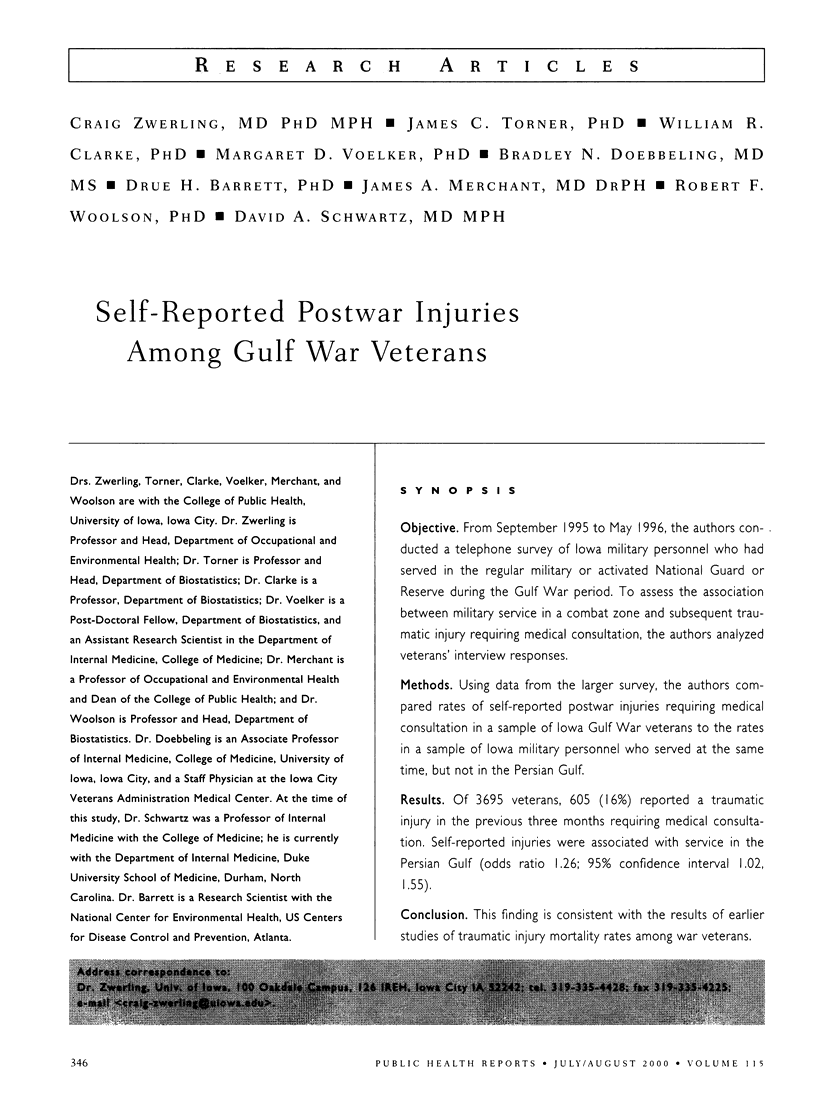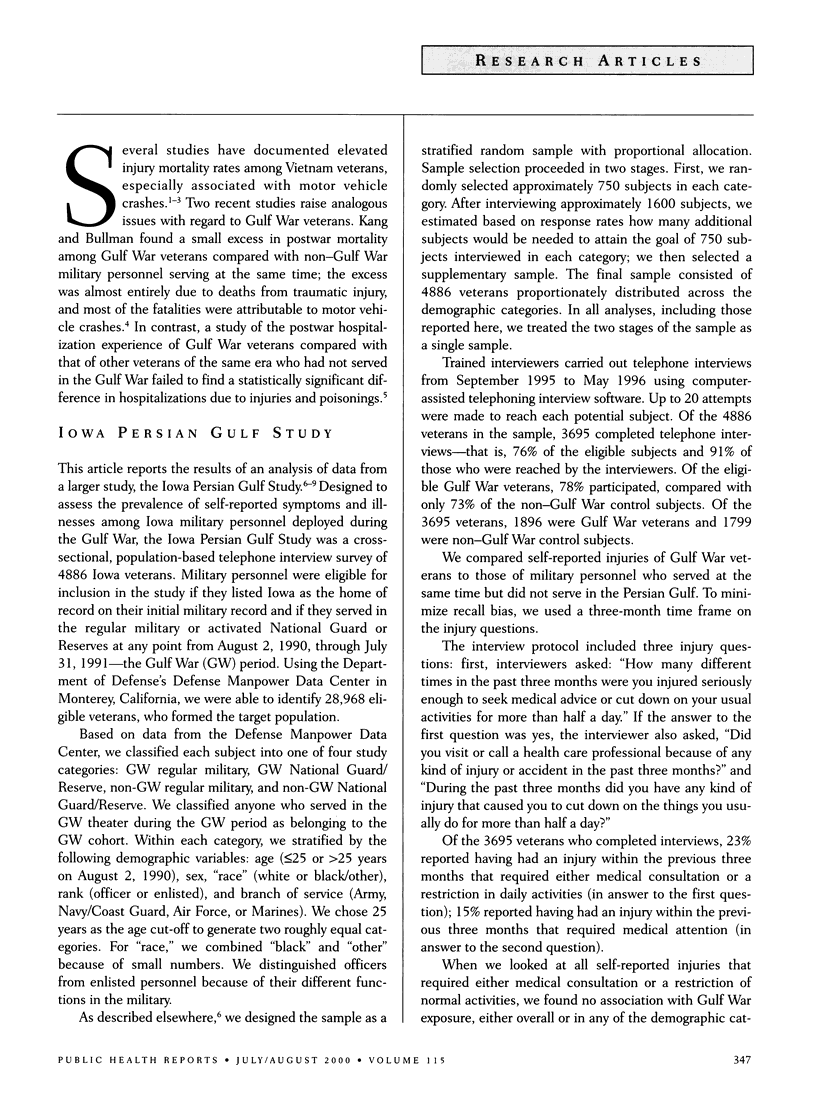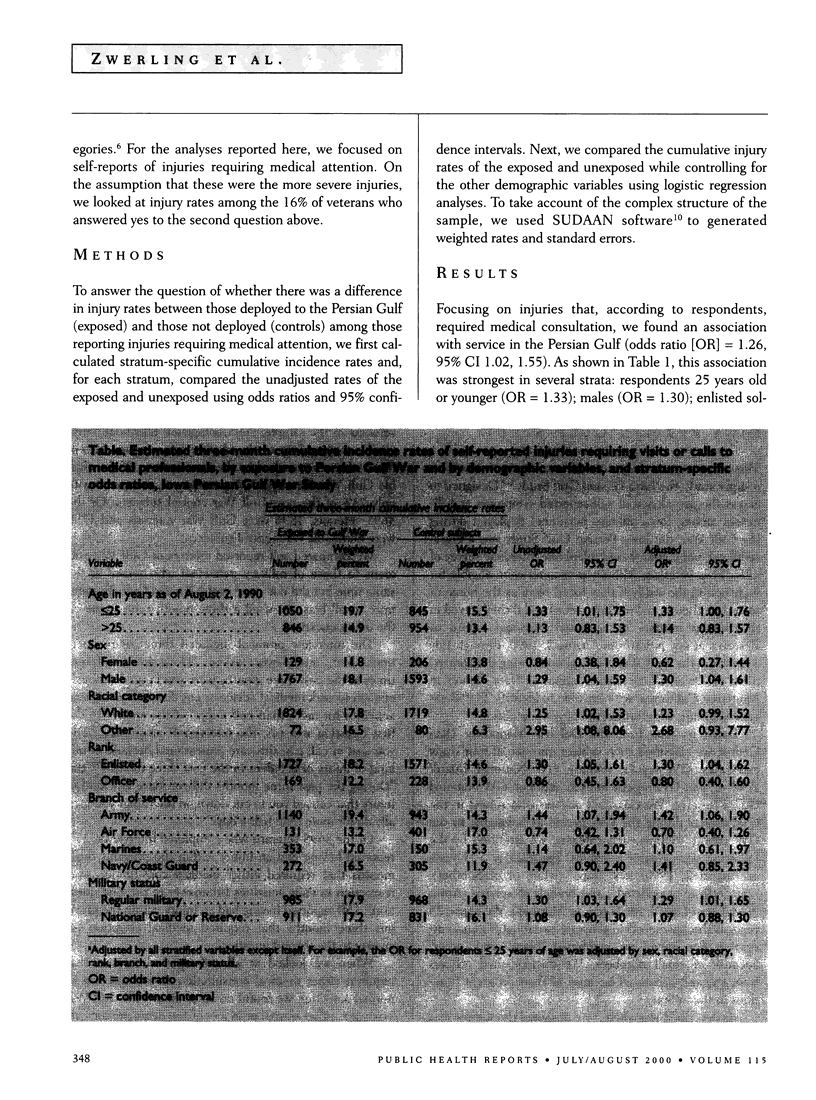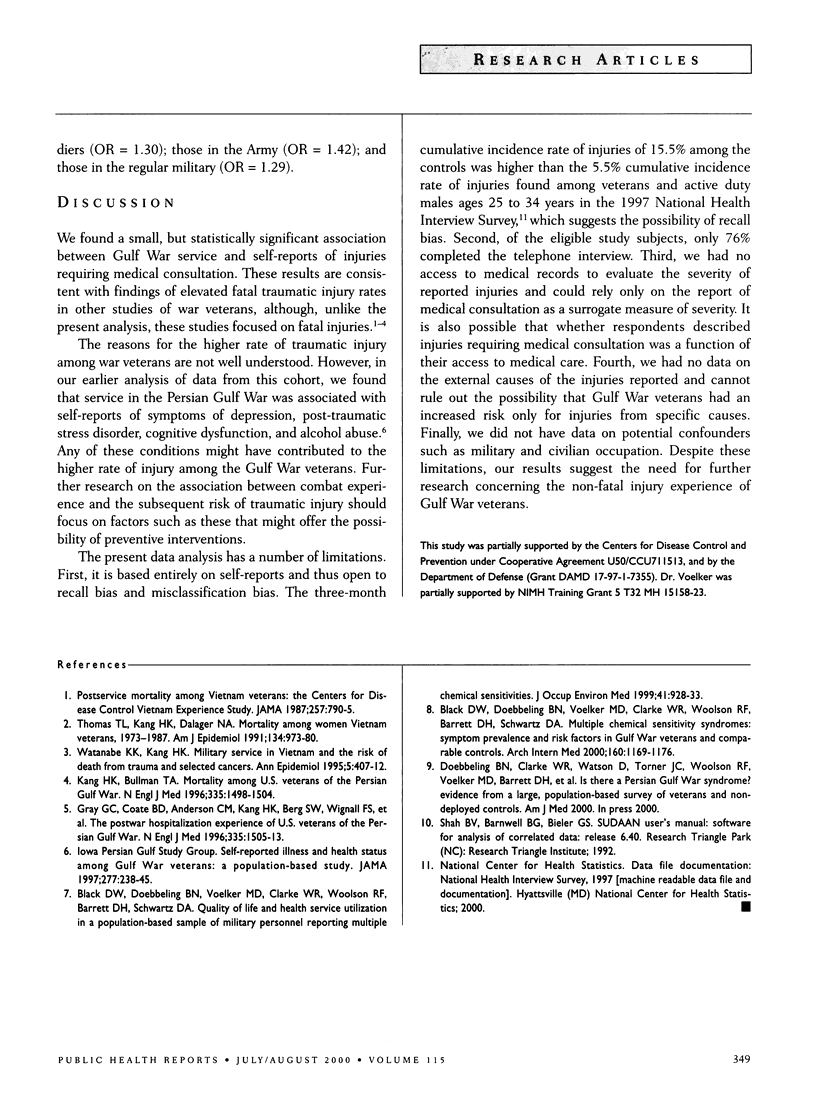Abstract
OBJECTIVE: From September 1995 to May 1996, the authors conducted a telephone survey of Iowa military personnel who had served in the regular military or activated National Guard or Reserve during the Gulf War period. To assess the association between military service in a combat zone and subsequent traumatic injury requiring medical consultation, the authors analyzed veterans' interview responses. METHODS: Using data from the larger survey, the authors compared rates of self-reported postwar injuries requiring medical consultation in a sample of Iowa Gulf War veterans to the rates in a sample of Iowa military personnel who served at the same time, but not in the Persian Gulf. RESULTS: Of 3695 veterans, 605 (16%) reported a traumatic injury in the previous three months requiring medical consultation. Self-reported injuries were associated with service in the Persian Gulf (odds ratio 1.26; 95% confidence interval 1.02, 1.55). CONCLUSION: This finding is consistent with the results of earlier studies of traumatic injury mortality rates among war veterans.
Full text
PDF



Selected References
These references are in PubMed. This may not be the complete list of references from this article.
- Black D. W., Doebbeling B. N., Voelker M. D., Clarke W. R., Woolson R. F., Barrett D. H., Schwartz D. A. Multiple chemical sensitivity syndrome: symptom prevalence and risk factors in a military population. Arch Intern Med. 2000 Apr 24;160(8):1169–1176. doi: 10.1001/archinte.160.8.1169. [DOI] [PubMed] [Google Scholar]
- Black D. W., Doebbeling B. N., Voelker M. D., Clarke W. R., Woolson R. F., Barrett D. H., Schwartz D. A. Quality of life and health-services utilization in a population-based sample of military personnel reporting multiple chemical sensitivities. J Occup Environ Med. 1999 Oct;41(10):928–933. doi: 10.1097/00043764-199910000-00014. [DOI] [PubMed] [Google Scholar]
- Gray G. C., Coate B. D., Anderson C. M., Kang H. K., Berg S. W., Wignall F. S., Knoke J. D., Barrett-Connor E. The postwar hospitalization experience of U.S. veterans of the Persian Gulf War. N Engl J Med. 1996 Nov 14;335(20):1505–1513. doi: 10.1056/NEJM199611143352007. [DOI] [PubMed] [Google Scholar]
- Kang H. K., Bullman T. A. Mortality among U.S. veterans of the Persian Gulf War. N Engl J Med. 1996 Nov 14;335(20):1498–1504. doi: 10.1056/NEJM199611143352006. [DOI] [PubMed] [Google Scholar]
- Thomas T. L., Kang H. K., Dalager N. A. Mortality among women Vietnam veterans, 1973-1987. Am J Epidemiol. 1991 Nov 1;134(9):973–980. doi: 10.1093/oxfordjournals.aje.a116182. [DOI] [PubMed] [Google Scholar]
- Watanabe K. K., Kang H. K. Military service in Vietnam and the risk of death from trauma and selected cancers. Ann Epidemiol. 1995 Sep;5(5):407–412. doi: 10.1016/1047-2797(95)00039-a. [DOI] [PubMed] [Google Scholar]


